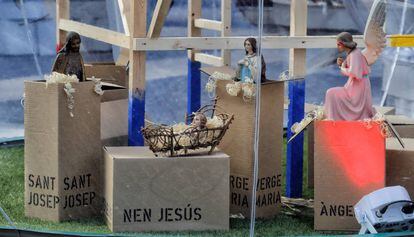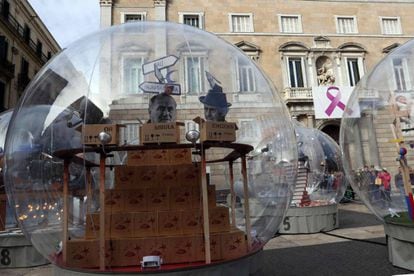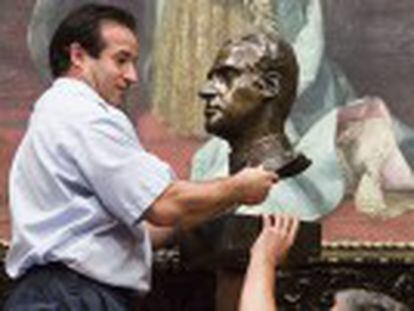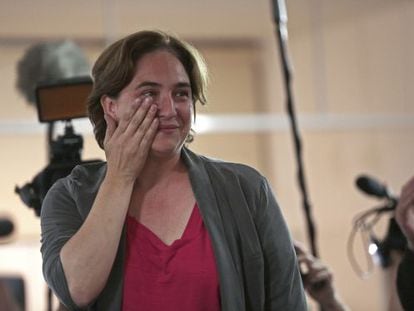Barcelona’s nativity scene: “contemporary” or “twisted”?
Nine giant see-through spheres based on a Catalan poem spark controversy, as they were meant to

Once again, Christmas in Barcelona is the subject of heated public debate. When Deputy Mayor Jaume Collboni unveiled this year’s Christmas program of events, the nativity scene in the city’s Sant Jaume square immediately sparked controversy, with some describing it as “twisted.”

Aware that the left-leaning City Hall’s modern take on the representation of the birth of Christ would draw ire from some quarters, the official chose to embrace it.
“The crèche offers a contemporary vision inspired by a poem by Josep Vicenç Foix. We hope that it will bring as much controversy as other years, because otherwise it would just not be the nativity of Sant Jaume Square,” he quipped.
The Vatican has approved the sculptures for worship
Within 24 hours irate comments began pouring in.
The Popular Party's (PP) leader at City Hall, Alberto Fernández Díaz, accused the Mayor Ada Colau, of “twisting Christmas.”
The conservative politician said that the installation “may be many things, but a manger it is not.”
“If Colau does not want to display a nativity scene, let her come out in public and say that there’s nothing to celebrate at Christmas and no tradition to uphold,” he continued.

The installation's creators, Toti Toronell and Quim Domene, say they drew inspiration from the poem Ho sap tothom i es profecía (or Everyone knows it and it is a prophecy), by Josep Vicenç Foix.
The poem is divided into nine stanzas, and the artists illustrated this by creating nine giant see-through spheres that bring to mind snow globes.
Inside the first sphere is a bed covered with straw. At its feet, several cardboard boxes that might conceivably be Christmas presents bear different words in stenciled letters that read “Mule,” “Shepherd” and “Lamb.” Other gifts are half-open, partly showing traditional figures lent by the Olot Museum – the Virgin Mary, Joseph and an angel. The box labeled Nen Jesús (Baby Jesus) is topped by a tiny crib containing the museum’s baby Christ figure.
In the second sphere, two automatons dance next to a pile of children’s shoes – in Spain, children traditionally put out a shoe so the Three Wise Men will leave them presents.
Is Christmas canceled?
Mayor Ada Colau, who took office in June 2015 after running on a leftist civic platform called Barcelona en Comú, has been accused by conservatives of trying to eliminate Christmas traditions. Last year, the website of the City of Barcelona encouraged all residents to “celebrate the winter solstice,” noting that “this is one of the oldest celebrations around. And not just in our territory, but in the entire world.”
Other spheres feature a Picasso-like dove, Christmas trees, banquets and a character out of Catalan mythology known as Home dels Nassos, or Man of the Noses, who is said to have a different nose for every day of the year.
The representation of the Magi is another source of controversy. Instead of the traditional kings of Orient riding camels, there are three photographs of Catalan cultural figures – the painter Joan Miró, the musician Pau Casals and the poet Josep Vicenç Foix – rotating atop carriages with the words “Gold, incense and myrrh.”
In their defense, the artists say the sculptures on loan from the Olot museum have been approved for worship by the Vatican.
English version by Susana Urra.












































